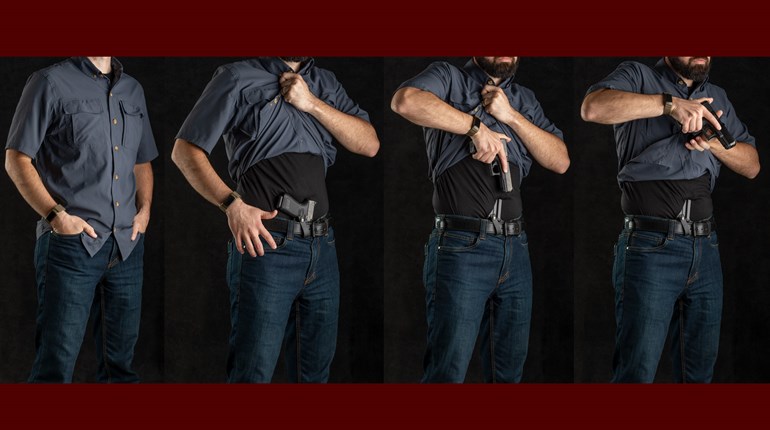
Photo courtesy Kathrine McGhghy.
Kathrine McGhghy was parking her vehicle outside her apartment in Dallas, Texas, in 1998 when she noticed a car passing by slowly. She thought little of it and stepped out to check whether she had parked close enough to the curb.
Then she heard footsteps running up behind her.
“I’m about to get robbed,” she thought. But that thought came too late.
She turned toward the sound, and a man pointed a gun at her face. “Give me your purse!” he shouted. McGhghy tried to push his gun away from her and hold on to her purse, telling him she had no money. “Shut up and give me your purse! Give me your purse, or I’ll [expletive] shoot you!” he responded.
McGhghy threw the bag at his feet, sat stunned a few minutes, and then tried to follow the assailants in their vehicle. She never found them, and other crimes occurred in the same apartment complex not long after that she believed were probably related. She worried she would encounter the robbers again.
“It taught me to watch my surroundings to not be a victim again,” McGhghy told America’s 1st Freedom in a phone interview. “And I think it’s real important for my safety to have a gun if I need it.”
McGhghy regularly rides a motorcycle, an activity in which women are increasingly participating. And now she rides with a concealed 9 mm Glock 19 or .45 Taurus Judge.
McGhghy said women motorcycle riders have to be discerning about potential threats. “A lot of people walk up to you to look at your bike,” she said. “You really have to read their signals well.” She noted that misreading those signals could endanger not only the rider’s life, but others’ as well.
Darlene Hanson, who has a led a women’s charitable riding group and teaches safety and emergency response for motorcyclists, agreed: “Nobody thinks anything about coming up to you on the bike—men, women, so many people. They seem to just circle; lots of people approach,” Hanson said.
Hanson said she’s always assessing her surroundings in case of problems, and she keeps a firearm concealed as a last resort. “It’s not just for on the bike,” she said. She often takes long trips alone on her motorcycle and said women riders need to consider all the times they have to stop, such as at fueling stations, restaurants, and hotel rooms. However, the bike’s throttle is her first response to a threat. “You can get out of there, fast,” she said. “Most people can’t hit a moving target.”
Many women, especially those new to either motorcycling or firearms (or both), struggle to find the right way to carry on the bike. Many women concealed carriers like to use a belly band for daily carry, but that may cause motorcyclists problems for long rides since the gun rests near the bend in the hip while sitting.
McGhghy told me she conceals her firearm and spare magazines using a shoulder holster under a vest or light jacket.
“I couldn't carry on my ankle because there's too much heat down there [from the motorcycle’s engine], and I feel like I might lose it,” McGhghy said. “Some women carry in their luggage, but you can't get to it in time. I could carry on my thigh, but then it might invite too much attention.”
Another woman I spoke with said she keeps a .380 in her trunk and a .22 pistol in her right front pants pocket. She can reach the latter easily as she’s getting off the bike, but not as easily while seated. Even after years of riding while concealing, she said she’s still looking for the perfect solution.
As with all concealed carry options, there’s probably not one answer for every woman. Tamara Keel, a longtime motorcyclist and gun owner, said she thinks motorcyclists should just plan for the end of the ride.
“It’s like carrying anywhere else,” Keel said. “The chances of needing it on the bike are less than when you get there. People have asked me about special holsters for the car, but my car holster is the same as my walking-around holster, my home holster, and my motorcycle holster. It’s just … my holster.”


































